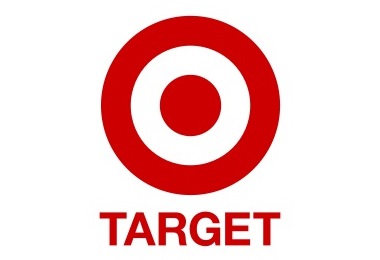
Can the company dodge the risk of irrelevancy? Sears Holdings Corp. (NASDAQ: SHLD) has not, and the company and its shareholders are paying the price. But is Target heading down the same path?
While the causes for the troubles at the two stores are different, the effects are quite similar: traffic is down in U.S. stores, Canadian operations are troublesome and neither company has been able to make a serious entry into digital sales.
Comparable-store sales fell 0.3% in the first quarter, and the company said in its first-quarter report that growth rates were lower than they were before the data breach, particularly for the company’s debit cards. Target said it was working to speed up growth, but it expects the slower growth rate to prevail through the year.
In a Tuesday morning announcement of additional expenses related to the data breach, Target said that U.S. sales are expected to be flat for the second quarter and that earnings per share will be about $0.78, compared with the company’s previous estimate of a range of $0.85 to $1.00. Lower-than-expected EBITDA will result from more promotional markdowns and customers are expected to spend more cautiously.
ALSO READ: Target Hires New CEO from Pepsi — Why Did He Leave?
Gross margins in the company’s Canadian stores were pummeled by markdowns, shrinking to 18.7% compared with 38.4% in the year-ago quarter. Revenues were much higher as the Canadian store count rose from 24 to 127, and SG&A expenses were cut dramatically. Target said in its earnings warning Tuesday that Canadian sales will be softer than expected and clearing excess inventory will continue.
Target did not go into any detail about its online sales, but the company is not among the top 50 Web properties on comScore’s latest list from March. The only brick-and-mortar retailer on that list is Wal-Mart Stores Inc. (NYSE: WMT), at 27th with 34 million unique visitors, still far behind Amazon.com Inc. (NASDAQ: AMZN), with more than 103 million unique visitors.
The comparisons with Walmart make it even harder for Target to project good news looking forward. Walmart’s international presence has helped the world’s largest retailer weather the storm of lagging U.S. sales. Target gets no such help.
Target long ago gave up trying to compete with Walmart on price, but last year’s data breach has hit the store’s best customers the hardest — the more you shopped at Target, the better the chances that your data was stolen.
Finally, Walmart has absolutely dominated Target in moving online. Growing that part of its business may be critical for Target, but that will be a costly uphill slog against the two retail giants. Walmart’s online revenue in its most recent fiscal year totaled $10 billion, well short of Amazon’s nearly $61 billion. Target did not report online sales separately for 2013, but the company did say that online sales rose more than 20% over 2012, when Internet Retailer estimated the company’s online sales at $1.93 billion.
To say that Target is on a path to being the next Sears is probably overly gloomy. But the new CEO needs to make something positive happen quickly to demonstrate that the company can conquer its troubles and not simply contain the damage.
The stock traded down 2.9% to $58.94, after falling to $58.00 earlier Tuesday morning. The 52-week range is $54.66 to $71.93.
ALSO READ: 10 Brands That Will Disappear in 2015
Thank you for reading! Have some feedback for us?
Contact the 24/7 Wall St. editorial team.